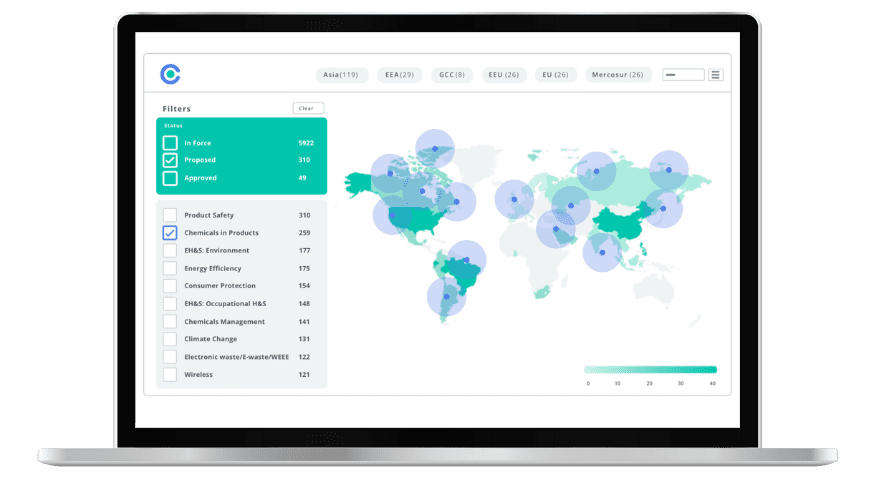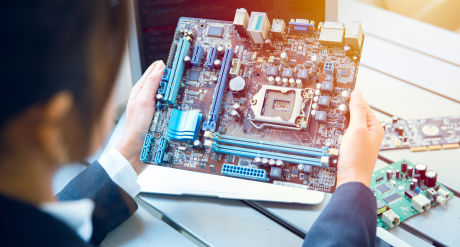
Ukraine Approved Ecodesign Requirements for Electronic Displays

This blog was originally posted on 25th September, 2024. Further regulatory developments may have occurred after publication. To keep up-to-date with the latest compliance news, sign up to our newsletter.
AUTHORED BY HANNAH JANKNECHT, REGULATORY COMPLIANCE SPECIALIST & JULIANA KECEROVA, SENIOR REGULATORY COMPLIANCE SPECIALIST, COMPLIANCE & RISKS
Ecodesign Requirements for Electronic Displays in Ukraine
On 20 August 2024, the Ukrainian Cabinet of Ministers adopted Resolution No. 949 to approve a Technical Regulation laying down ecodesign requirements for electronic displays. As part of the EU-Ukraine Association Agreement, the Technical Regulation is modelled on Regulation (EU) 2019/2021 (ErP ENER Lot 5).
It establishes ecodesign requirements for electronic displays, including TV sets, monitors, and digital information displays.
The conformity assessment must be carried out based on the internal design control procedure set out in Article 5, Annexes 3 and 4, including the necessary technical documentation (must entail a list of all equivalent models, including model identifiers).
Moreover, products that automatically alter their performance in test conditions to improve the declared parameters are prohibited from being placed on the market.
The energy consumption of the product and any of the other declared parameters shall not deteriorate after a software or firmware update when measured with the same test standard originally used for the declaration of conformity except with explicit consent of the end-user prior to the update. No performance change shall occur as result of rejecting the update. A software update shall never have the effect of changing the product’s performance in a way that makes it non-compliant with the ecodesign requirements applicable for the declaration of conformity.
Limit Values and Design
Annex 2 sets out the ecodesign requirements for electronic displays, including limit values for the ‘on’, ‘off’ and ‘standby’ mode and mandatory settings. Displays must have an automatic standby mode, and the Technical Regulation prescribes different timeframes and warning messages for each type of display. Furthermore, displays must be designed in a way that ensures easy dismantling, recycling and repair, i.e. by using methods of joining, fastening or sealing that do not prevent the removal of components with commonly available tools.
Compliance Timeline
The EEI of an electronic display shall not exceed the maximum EEI (EEImax) according to the limits referred to in Table 1 of Annex 2. The compliance timeline is split into 2 phases:
- Phase 1 – From the date of entry into force of the Technical Regulation
- Phase 2 – 2 years from the date of entry into force of the Technical Regulation
Labeling of Plastic Components and Cadmium Label
Plastic components weighing more than 50g shall be labelled by indicating the type of polymer with the appropriate standard symbols or abbreviated terms, separated by “>” and “<” as specified in the applicable standards. Marking must be legible.
Electronic displays with a screen panel in which the concentration of cadmium (Cd) by weight in homogeneous materials exceeds 0.01%, must bear a label reading “Contains cadmium”. The label must be clearly visible, durable, legible, indelible and must comply with the size requirements set out in Annex 2. The “Cadmium-free” shall be used if concentration values of Cadmium (Cd) by weight in any homogeneous material part of the display do not exceed 0.01 %.
The use of halogenated flame retardants is not allowed in the enclosure and stand of electronic displays.
In addition, before the entry into force of the new requirements under this Resolution, the placing on the market of electronic products that comply with the requirements under Resolution No. 735 from 2019 is not prohibited or restricted.
Stay Ahead Of Regulatory Changes in Ecodesign Requirements for Electronic Displays
Want to stay ahead of regulatory developments like Ukraine’s ecodesign requirements for electronic displays?
Accelerate your ability to achieve, maintain & expand market access for all products in global markets with C2P – Your key to unlocking market access, trusted by more than 300 of the world’s leading brands.
C2P is an enterprise SaaS platform providing everything you need in one place to achieve your business objectives by proving compliance in over 195 countries.
C2P is purpose-built to be tailored to your specific needs with comprehensive capabilities that enable enterprise-wide management of regulations, standards, requirements and evidence.
Add-on packages help accelerate market access through use-case-specific solutions, global regulatory content, a global team of subject matter experts and professional services.
- Accelerate time-to-market for products
- Reduce non-compliance risks that impact your ability to meet business goals and cause reputational damage
- Enable business continuity by digitizing your compliance process and building corporate memory
- Improve efficiency and enable your team to focus on business critical initiatives rather than manual tasks
- Save time with access to Compliance & Risks’ extensive Knowledge Partner network

Prepare to Repair: Right-to-Repair Rules in the US and the EU
With new repair rules in the EU, this webinar clarifies manufacturers’ obligations to repair, access to spare parts for independent repairers, and more. It also provides an overview of the US state Right to Repair legislation, including enacted and proposed bills.


